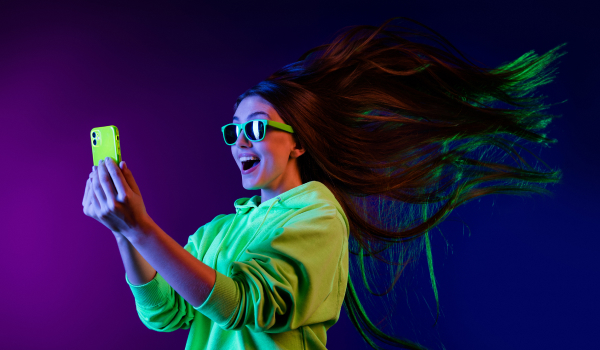 Logo
Logo
EXPERT INSIGHTS
Jan-11-2019
How PepsiCo Succeeds with Experiential Marketing by Letting Fans Lead
Jaime Netzer
The power of social media is undeniable — there simply isn’t a better place to find and connect with your customers — but real-world connections are still incredibly important to the brand-customer relationship. We’ve explored how, even while online sales take off, there’s still a place for brick-and-mortar establishments. In the same way, even as digital relationships become increasingly more important, audiences still seek real-world brand interactions. Experiential marketing paired with social media amplification is an excellent way to maximize the impact of real-world fan interactions.
At Spredfast's (now Khoros) SmartSocial Summit event, PepsiCo proved just how impactful experiential marketing can be. At Summit, Rachel Ferdinando, Vice President of Marketing at PepsiCo, explained that the beverage and snack food giant takes a traditional approach to experiential marketing: they create a brand event and then they amplify it on social media. “The reason we try to amplify from physical experience is because it’s short-lived and we can’t reach as many consumers with it, so we amplify it after the fact on social media,” Ferdinando explained.
Experiential marketing can heighten connections to your brand both for the people experiencing your event in person and for those following along on social media. “Experiential marketing, when done well, is going to create a closer bond between you and your audience,” Spredfast’s Graham Forsyth said. We think brands from every industry will find inspiration in the following examples of PepsiCo’s recent experiential marketing efforts, detailed by Ferdinando at Summit.
Finding ideas on social media: The Cheetos Museum
Ferdinando explained that many of PepsiCo’s ideas for experiential marketing activations actually come from their social media channels: “A lot of ideas come to our brands from the social media space. We’re always listening and looking for those organic behaviors that consumers naturally do around our brands.” PepsiCo scours social media to see how consumers embody their brands, how they interact with their brands, and how their brands show up in the lives of everyday consumers. “When we find organic traits we celebrate them, we leverage them, and we encourage them,” Ferdinando said. The Cheetos Museum is an excellent example of PepsiCo’s approach to organic experiential marketing content.
“Our fans are so passionate about Cheetos that they do amazing things,” Ferdinando said. Fans sent PepsiCo thousands of images of shapes in their Cheetos — animals, people, even American presidents. PepsiCo saw that people were sharing their Cheetos shapes — there were even Instagram pages dedicated to them — and got inspired. PepsiCo began in social, inspiring people to find shapes in their Cheetos, and then they took those shapes from the social media space into the real-world by creating a physical museum of Cheetos shapes:
“The experience really leveraged what consumers were doing,” Ferdinando explained, adding that they had 23 million video views and they were a trending topic in social media as a result of the activation. And, in the real world, fan engagement was high, too: there were 127,000 shapes submitted to the museum and 10,000 people visited the museum in New York.
Leaning into fan love: the Cheetos Vision App
“Again, we were inspired by what people were doing in reality, what their natural behaviors were around the brand,” Ferdinando said. “We found that consumers wanted to look like a Cheeto. They wanted to be a Cheeto.” So, Ferdinando explained, PepsiCo wanted to transform their fans’ physical world into a Cheeto. Using AI technology, PepsiCo created an app, called Cheeto Vision, to help fans transform their world.
“This is a great example of where we’ve taken that physical world and translated it into an online experience,” Ferdinando said. In this case, fans could participate in PepsiCo’s experiential marketing activation from anywhere.
People use social media now as an extension of their lives. “There’s this convergence between the offline and online world,” Ferdinando said. “They’re no longer separate — they’re in fact often one and the same thing.” And when it comes to experiential marketing, she added, users can be physically experiencing the brand while still virtually experiencing it as well. What that means, Ferdinando added, is that brands need to offer consumers a robust experience in both realms, and those realms have to be seamless, because they often collide.
As you think about your brand’s potential experiential marketing activations, keep in mind that activations don’t need to be big events, Forsyth reminded the Summit audience. Brands with smaller budgets, or less bandwidth for experiential marketing activations, can still create a lasting impact by amplifying their real-world events on digital media.











